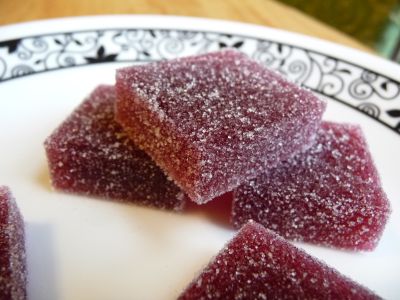Peanut brittle
The recipe I use is from David Lebovitz's The Perfect Scoop, mostly because I know where to find it! I'd be surprised if I didn't have other recipes for it elsewhere in my cookbook collection, but this one has been consistently successful for me, so it's the one I turn to. It's pretty heavy on the peanuts compared to some I've eaten (presumably because it's meant to be an ice cream mix-in), so I imagine you could cut back if you want a higher candy-to-nut ratio.
First, assemble your ingredients. Clockwise from top: 1/2 cup corn syrup, 1/2 cup granulated sugar, 2 Tbsp. water, 1.5 cups peanuts, 1/2 tsp. baking soda. Make sure you have a sheet pan standing by, lined with a silicone baking mat.
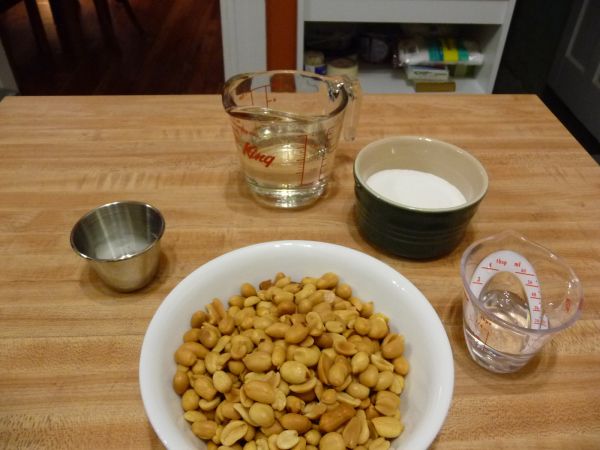
Attach your candy thermometer to a medium saucepan and add the corn syrup, sugar and water. Bring it all to a boil.
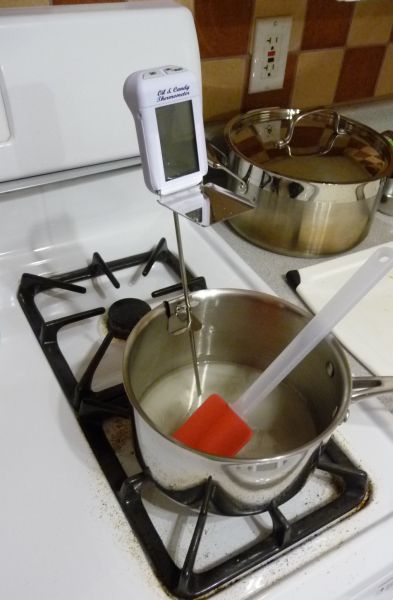
Once it's boiling, add the peanuts.
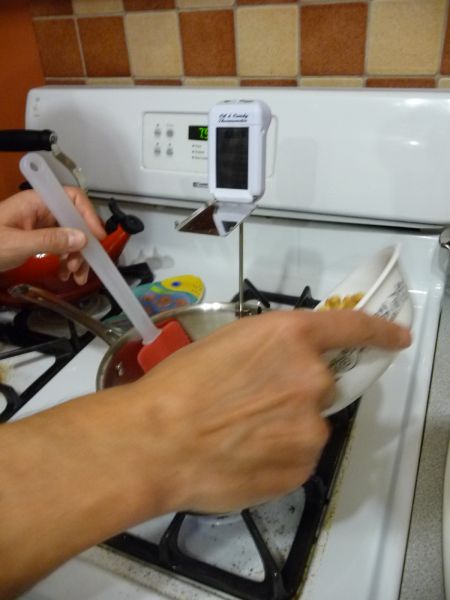
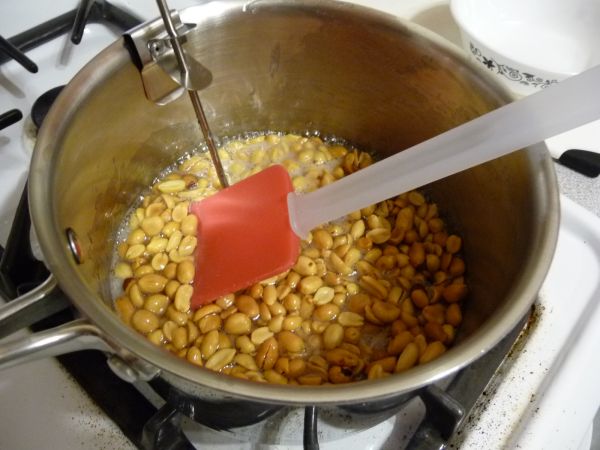
Stir them in (I'm using a silicone spatula here) and keep stirring until the mixture reaches 300F to 305F, being careful not to let the peanuts burn!

Once it reaches 300F to 305F, remove it from the heat, add the baking soda and stir well. The mixture should start to foam.
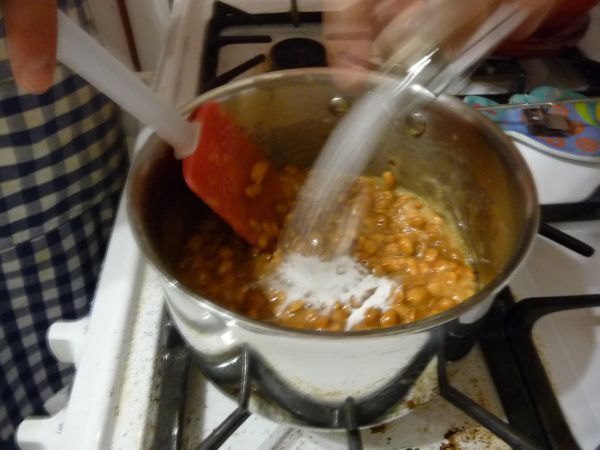
Quickly pour the candy onto the prepared sheet pan...
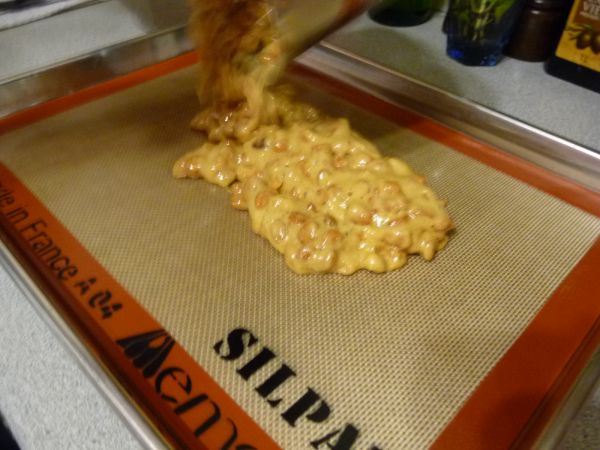
...and spread it out as thin as you can. It will start to harden pretty quickly as it cools.
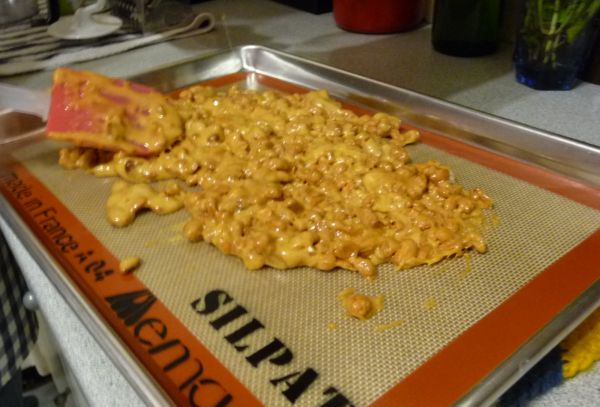
Once it's spread out, wait for it to cool completely, then break it into pieces and enjoy!

If you've never made candy before, this is a great place to start, because it's not finicky, and presentation isn't a big deal, since it's just going to end up broken into irregular pieces anyway. And if you still want to spend money at Williams-Sonoma (or your favourite kitchenwares store), you can always pick up a candy thermometer!
